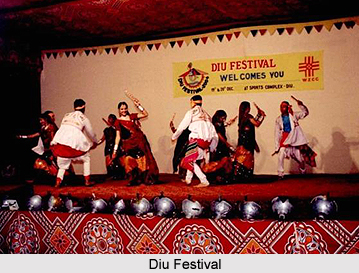 Culture of Daman and Diu represents a wonderful blend of European, tribal and Indian elements in art form. Daman and Diu has a rich multi faceted cultural heritage. The people of Daman and Diu follow the same customs and traditions as that of the people in Gujarat. The population comprises of Hindus, Muslims and a very few Christians.
Culture of Daman and Diu represents a wonderful blend of European, tribal and Indian elements in art form. Daman and Diu has a rich multi faceted cultural heritage. The people of Daman and Diu follow the same customs and traditions as that of the people in Gujarat. The population comprises of Hindus, Muslims and a very few Christians.
Gujarati language is the spoken language of the people. The people live according to the Hindu system prevailing in the adjoining Gujarat territory. They observe sacredly the customs of birth, marriage, sacred thread and other ceremonies. Dance and Music are a part and parcel of their life.
The Gangaji Fair is held near the Somnatha Mahadev temple. During this festival, large number of people within the district as well as outside gathers here. They take bath in the tank. The other two major festivals of the place are Garba Dance Festival and Folk Dance Festival. The young generation of the region participate in the Garba Festival. They dance wearing gorgeous dresses.
The Folk Dance Festival is a very important component of the cultural life of Daman and Diu. The dance forms associated with the Folk Dance Festival in Daman and Diu are Mando Music and Dance, Verdigao Dance and Vera Dance. People of all age-groups take part in the Folk Dance Festival.
The other major festivals are Holi, Dushera, Diwali, Christmas, New Year, Eid etc. Various varieties of birds are found here. The place is very best for bird watching. It has flocks of blue rock pigeons, parrots, koels, doves, crows and sparrows. A major attraction is the large number of migratory birds that fly into the region during August and stay till February. The major parks are Kadaiya Lake Garden, Mirasol Water Park, Jettty Garden etc.






